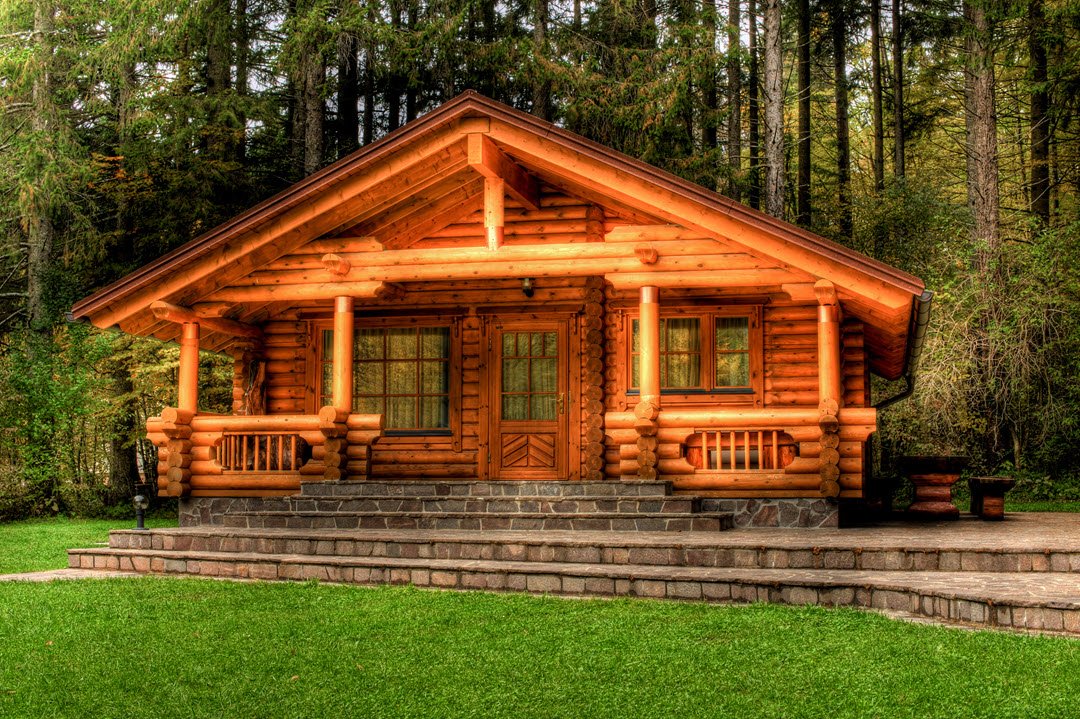
Education, like with most topics, is fundamental to your success.
The following questions should help dispel some of the rumors and put you on the road to a well-maintained log home.
Myth: Log home maintenance takes a lot of time.
Are log homes a lot of maintenance?
The truth is: they don’t have to be. If you plan ahead and design your home properly, you can save yourself a lot of work. Large overhangs, porches, proper landscaping, and tall foundations will reduce the need for a great deal of maintenance.
A log home is not a conventional home and will require non-conventional maintenance, but as long as you are aware of this upfront, you can design and plan for this.
Myth: Log home maintenance is complicated.
Not necessarily.
How do you maintain a log home?
The most important factor is to keep your log home clean. Look for signs that mold may be getting a foothold. Use a natural solution to remove mold. Vinegar can be used to kill mold on both nonporous surfaces and porous surfaces. Vinegar can more easily penetrate porous materials like wood to kill mold below the surface. Use equal parts vinegar and warm water.
Myth: Log homes have mold problems.
All surfaces can have a mold problem.
The more moisture there is, the more mold is likely to grow. Shady trees, water dripping from rooflines, and backsplash all contribute. Inspect the north side of your home more frequently than the other sides, as it will receive the least sunlight and, as a result, will stay damp longer after rainfall.
If you keep your logs dry, they can last for decades or even centuries.
Myth: All log stains are basically the same.
Each stain company has its own system and formulations. All try to do the best job to create a stain that will last for a reasonable price. This has created a multitude of systems across the log home industry. Your best bet is to educate yourself on all the available products and determine what will work best for your situation, and ask your log home contractor which stains they recommend.
The type of wood, the environmental conditions, and the age of the home all play a role in the decision-making process, as do time and price.
Myth: I can buy a good stain from the local hardware store.
Low prices and convenience make it tempting to buy your log home stain at a home improvement store,. However, there could be an unseen cost.
For maximum, long-term performance, log homes require specialized stains that contain additives not typically found in your average wood stains and sealants. Your best bet is to find a log home supply store or look online for companies specializing in log home stains and other maintenance treatments.
A good log home stain is formulated to prevent moisture from entering the fiber of your logs and has the right amount of pigment to prevent sun damage. A log home stain will also give you the best overall look for your home.
Myth: If you live in a dry area you can get by with less staining.
A log home stain’s main function is to repel moisture from being absorbed by the wood AND protect the surface from the sun’s damaging UV rays. Dry areas usually have lots of sunshine, and you want to prevent wood degradation from the sun. The pigment in the stain helps with this.
Large overhangs and porches also can help, but the stain is still required to keep the logs in prime condition.
Myth: Cracks in log homes are a problem.
Cracks, also called “checks,” are a natural characteristic of logs and nothing to worry about unless they are on the top side of an exterior log where rain, snow, and dirt can accumulate.
The best prevention method is to clean and fill the crack using a backer rod if necessary. Backer rods are used as a “backing” material to fill a void, joint, or crack in a log. The primary purpose of backer rods is to control the sealant thickness and amount needed to fill the crack.
Then apply the caulk with good pressure so that the sealant is forced into the gaps.
